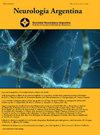程序的神经保护区域。优化脑卒中院前护理的新概念
Q4 Medicine
引用次数: 0
摘要
简介和目的血管疾病占阿根廷死亡人数的28%,其中脑血管疾病占17%。中风是成年人致残的主要原因,其治疗需要时间。国家荣誉众议院医学部与阿根廷神经学学会合作,实施了一项神经保护区方案,以改善其所有地区的中风反应。方法该方案包括5个阶段:局部分析、培训设计、制定行动算法、实施与监测、结果评价。对300名特工进行了20次理论和实践培训,并通过演练来评估该计划的有效性。训练前和训练后的调查也测量中风知识。结果调查显示,在所有评估地区,卒中意识都有显著提高。88%的参与者了解中风是什么,94.9%的参与者在训练后能够正确识别相关症状。人们对风险因素也有了更清晰的认识。演习证明了在紧急情况通知时间不到30分钟的情况下的有效反应。在培训前,检测到对有中风症状的个体的治疗延迟了140分钟,而在项目实施后,护理方案在不到30分钟内启动。结论:由国家荣誉众议院医学部和阿根廷神经学学会设计的神经保护方案已被证明是有效的,提高了对中风的认识和反应能力。这种模式可以在其他机构复制,优化院前护理,降低中风死亡率和致残率。本文章由计算机程序翻译,如有差异,请以英文原文为准。
Programa de Área Neuroprotegida. Un nuevo concepto en optimización de la atención prehospitalaria del accidente cerebrovascular
Introduction and objectives
Vascular disease accounts for 28% of deaths in Argentina, with 17% due to cerebrovascular disease. Stroke is the leading cause of disability in adults, and its treatment is time-dependent. The Medical Directorate of the Honorable Chamber of Deputies of the Nation, in collaboration with the Argentine Neurological Society, has implemented a Neuro-protected Area program to improve stroke response in all its areas.
Methods
The program included 5 stages: local analysis, training design, creation of an action algorithm, implementation and monitoring, and evaluation of results. Twenty theoretical and practical training sessions were conducted for 300 agents, with drills to assess the program's effectiveness. Pre- and post-training surveys were also conducted to measure stroke knowledge.
Results
The surveys showed a significant increase in stroke awareness across all evaluated areas. Eighty-eight percent of participants understood what a stroke is, and 94.9% of participants were able to correctly recognize the associated symptoms after the training. There was also a clearer understanding of risk factors. Drills demonstrated an effective response with emergency notification times under 30 minutes. Before the training, a delay of 140 minutes was detected in attending to an individual with stroke symptoms, whereas, after the program was implemented, the care protocol was activated in less than 30 minutes.
Conclusion
The neuro-protection program designed by the Medical Directorate of the Honorable Chamber of Deputies of the Nation and the Argentine Neurological Society has proven to be effective, improving knowledge and response capacity to strokes. This model can be replicated in other institutions, optimizing prehospital care and reducing stroke mortality and disability.
求助全文
通过发布文献求助,成功后即可免费获取论文全文。
去求助
来源期刊

Neurologia Argentina
Medicine-Neurology (clinical)
CiteScore
0.50
自引率
0.00%
发文量
34
期刊介绍:
Neurología Argentina es la publicación oficial de la Sociedad Neurológica Argentina. Todos los artículos, publicados en español, son sometidos a un proceso de revisión sobre ciego por pares con la finalidad de ofrecer información original, relevante y de alta calidad que abarca todos los aspectos de la Neurología y la Neurociencia.
 求助内容:
求助内容: 应助结果提醒方式:
应助结果提醒方式:


